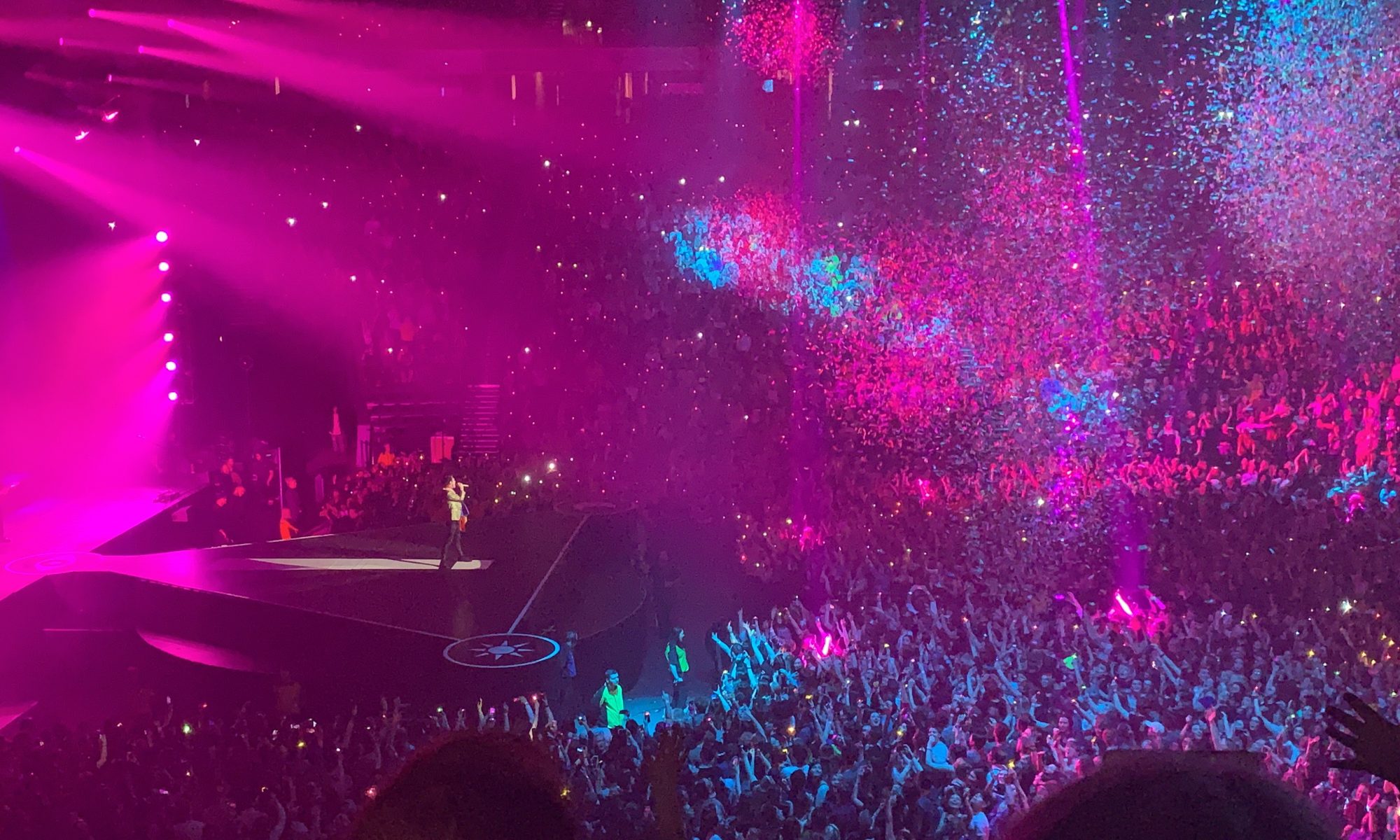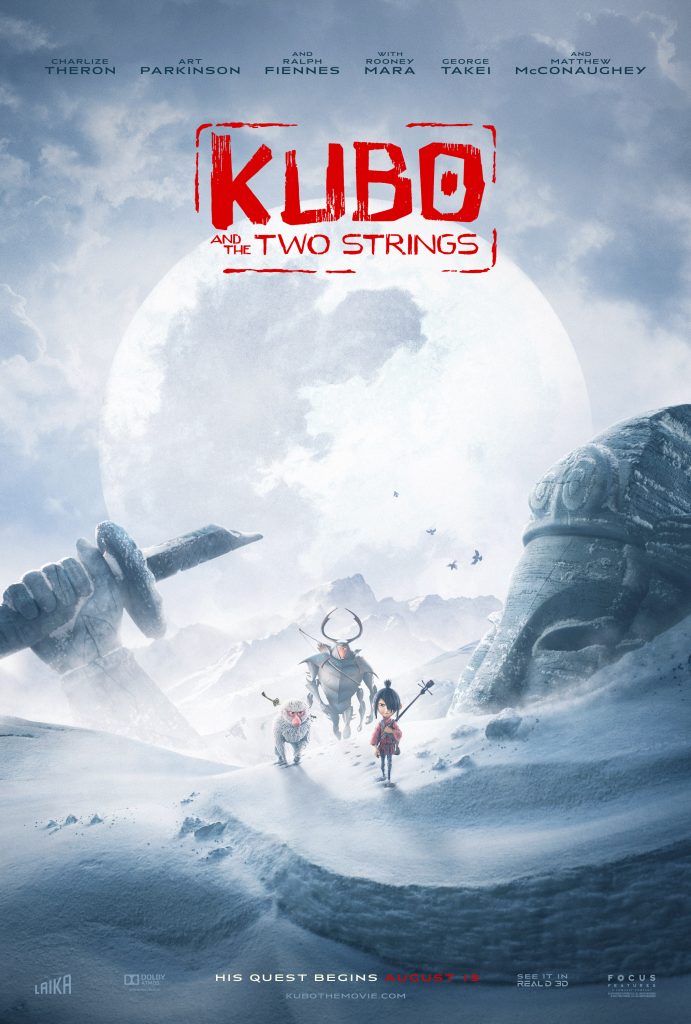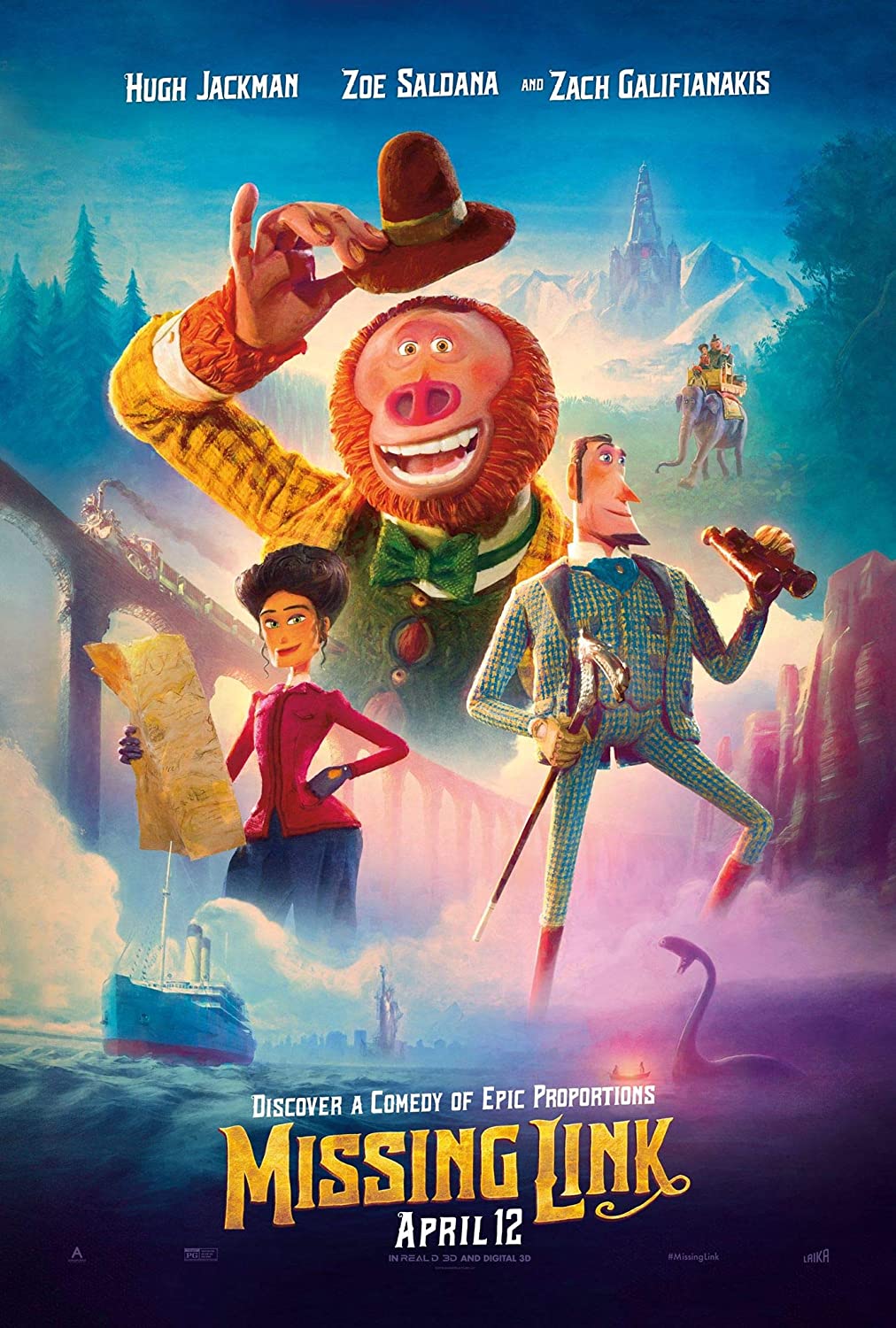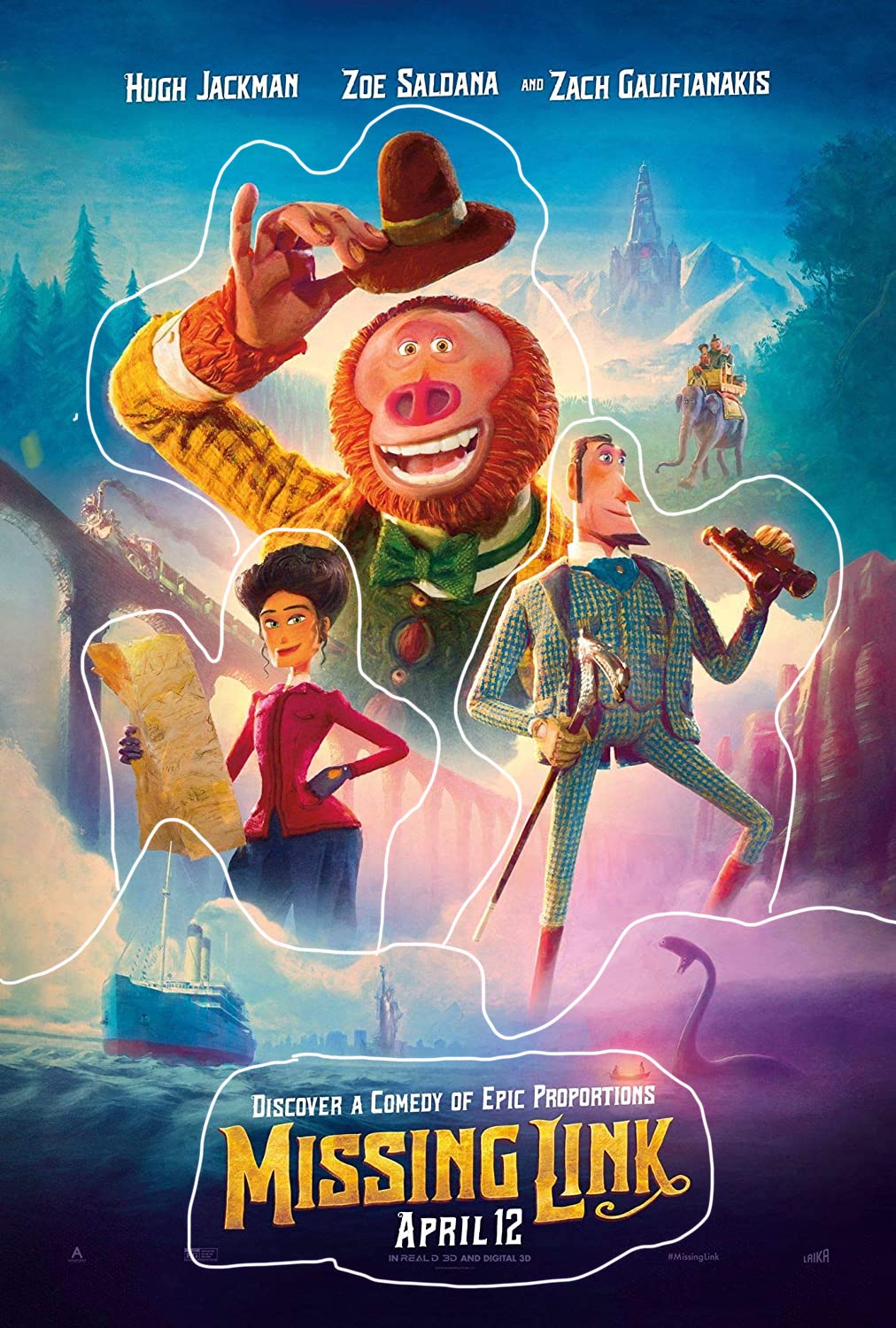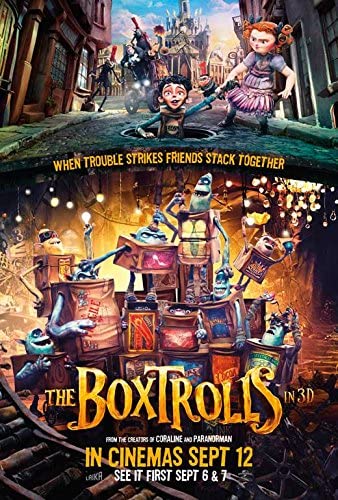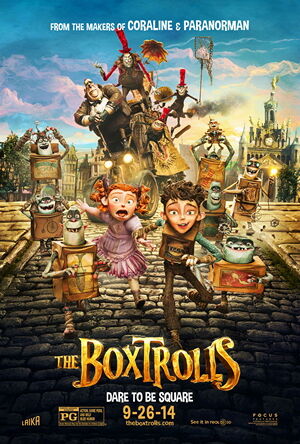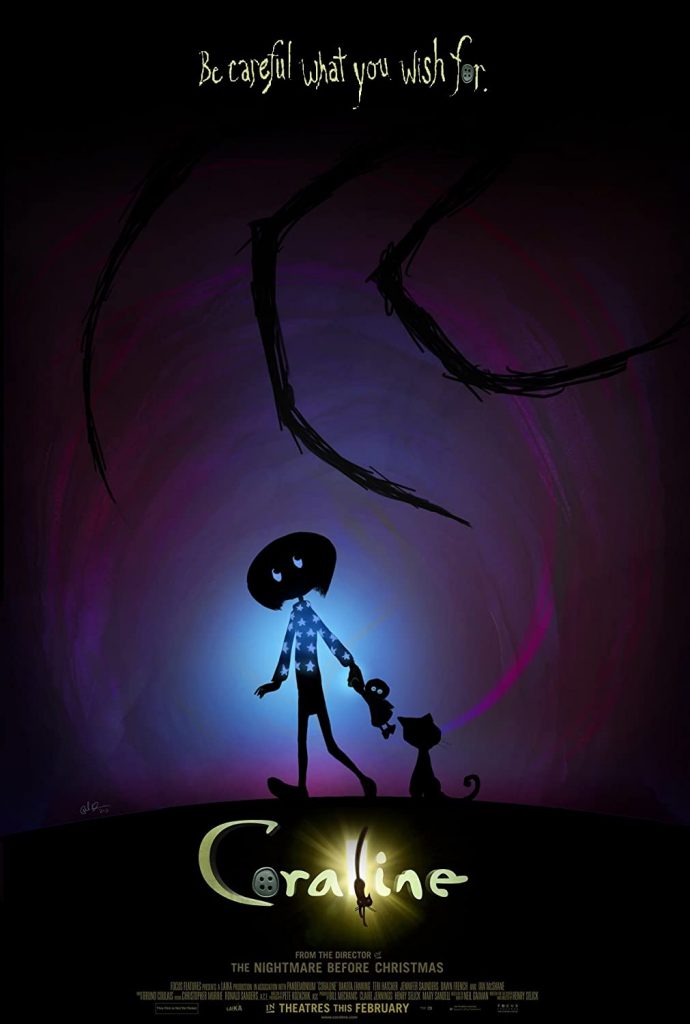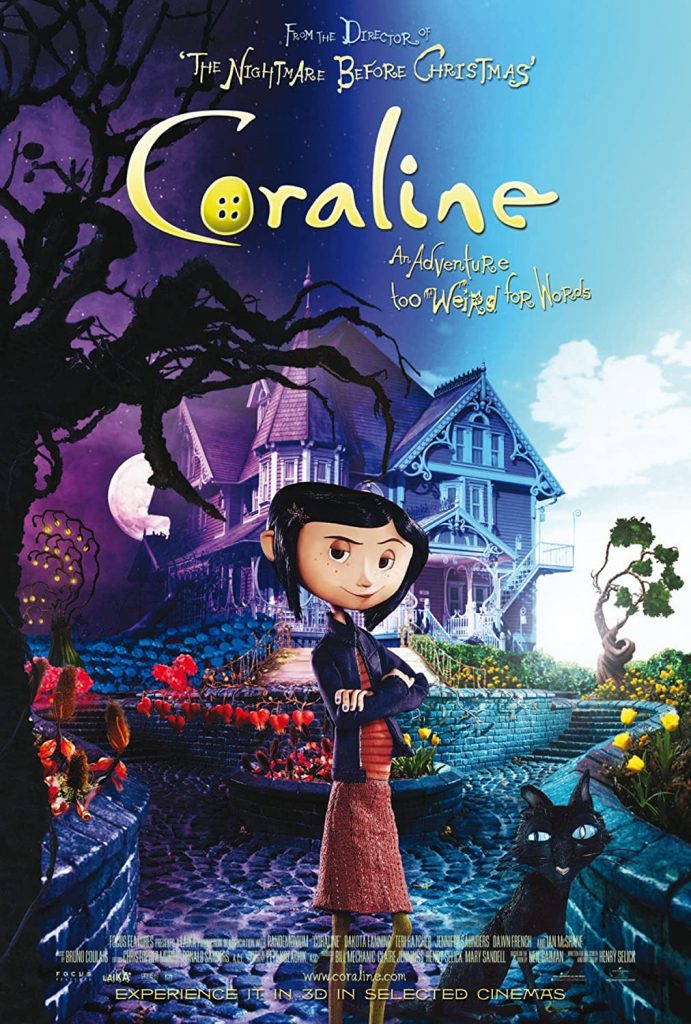For this concept of Micro/Macro I decided to use this poster from “Kubo and the Two Strings” (2016). Micro/macro is a concept created by Tufte which allows the designer to add smaller details which allows them to another layer of detail to an overarching design. Tufte can be quoted saying “to clarify, add detail” (Tufte, 1990), showing that a design can be emphasised by adding micro details that make up the whole macro image and add understanding.
Within this poster there are many uses of this concept and smaller details that may at first go unnoticed but add more complex information to the poster. One instance of this can be seen when looking closely at the group of characters. The furthest two appear to be carrying weapon whilst the closest appears to be carrying an instrument, this gives you more information about this character and his role in the film of being a more peaceful, relaxed character. The statue in the image you can see is buried in the snow, at first glance it just appears to be this but on further inspection you notice the broken sword and the battered nature, showing its age in relation to the characters and the broken sword could link with the themes of violence and peace. The moon also when looked at closely shows a clouded monstrous shape, adding information about the possible antagonist. The poster as a whole just shows characters venturing through a snowy landscape but with looking at the micro details you can recognise more information about the plot of the film and clarify information about it’s storyline. This poster also uses layering and separation to break up the focal points of the poster and add emphasis to important parts such as characters or the title.
Reference:
[1] Tufte, E., 1990. Envisioning Information. p.38.
[2] McGovern, J., 2016. Kubo And The Two Strings Trailer, Posters Debut. [online] EW.com. Available at: <https://ew.com/article/2016/07/06/kubo-and-two-strings-trailer-posters/> [Accessed 3 November
2020].
